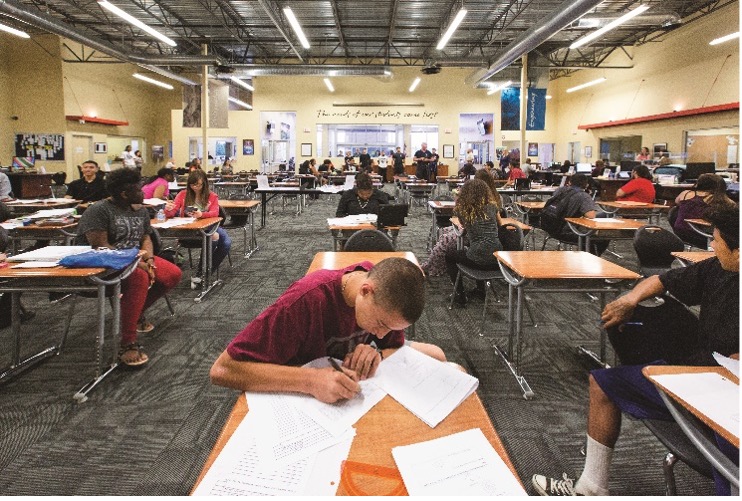
We find that not everyone understands what a nonclassroom-based school (NCB) is. First, what it is not. Nonclassroom-based does not mean online only. In fact, only about one-third of nonclassroom-based charter schools are primarily or exclusively virtual. It does mean flexible scheduling where students attend their school site as often as they need. At our schools, students meet with their teachers, complete work, take tests, attend labs, and receive tutoring and wraparound services.
Students who attend NCB charter schools are primarily those who had formerly dropped out, are from low-income households and deal with multiple recurring obstacles that hinder their success in a traditional school such as parenting, needing to work, dealing with trauma, experiencing homelessness or being in foster care. Rather than large classes, FLEX creates classrooms of one where the learning is personalized to the individual and delivered through one-on-one and small-group instruction, tailored to the student’s learning style.
Educators and psychologists agree that there are seven different learning styles: auditory/musical,
visual/spatial, verbal, logical/mathematical, physical/kinesthetic, social/interpersonal and solitary/intrapersonal. Most public high school teachers are responsible for 25-30 students in each of five or six classes. How, then, can they possibly teach 150+ students every day while knowing each learning style and adjusting the methods to engage them? Our teachers have caseloads of 30-35 students and meet with them one-on-one to guide them on their assignments.
Flexibility is key for our students, most of whom have adult responsibilities like needing to work or taking care of their babies. Students can do their homework at school or home, and can join small-group classes, get extra tutoring or meet with a counselor for help with life challenges.
Another benefit of NCB schools is that we can accept youth up to 22 years old once they have aged out of high school. Instead of dropping out and becoming a burden on the community, students can come back to school any day of the year and get the extra support they need to earn their diplomas.
If we’ve learned anything about schooling the past year, it is that flexibility is important, and we must do everything we can to keep kids engaged and learning. We believe that schools should be made convenient for the students – not the staff.
